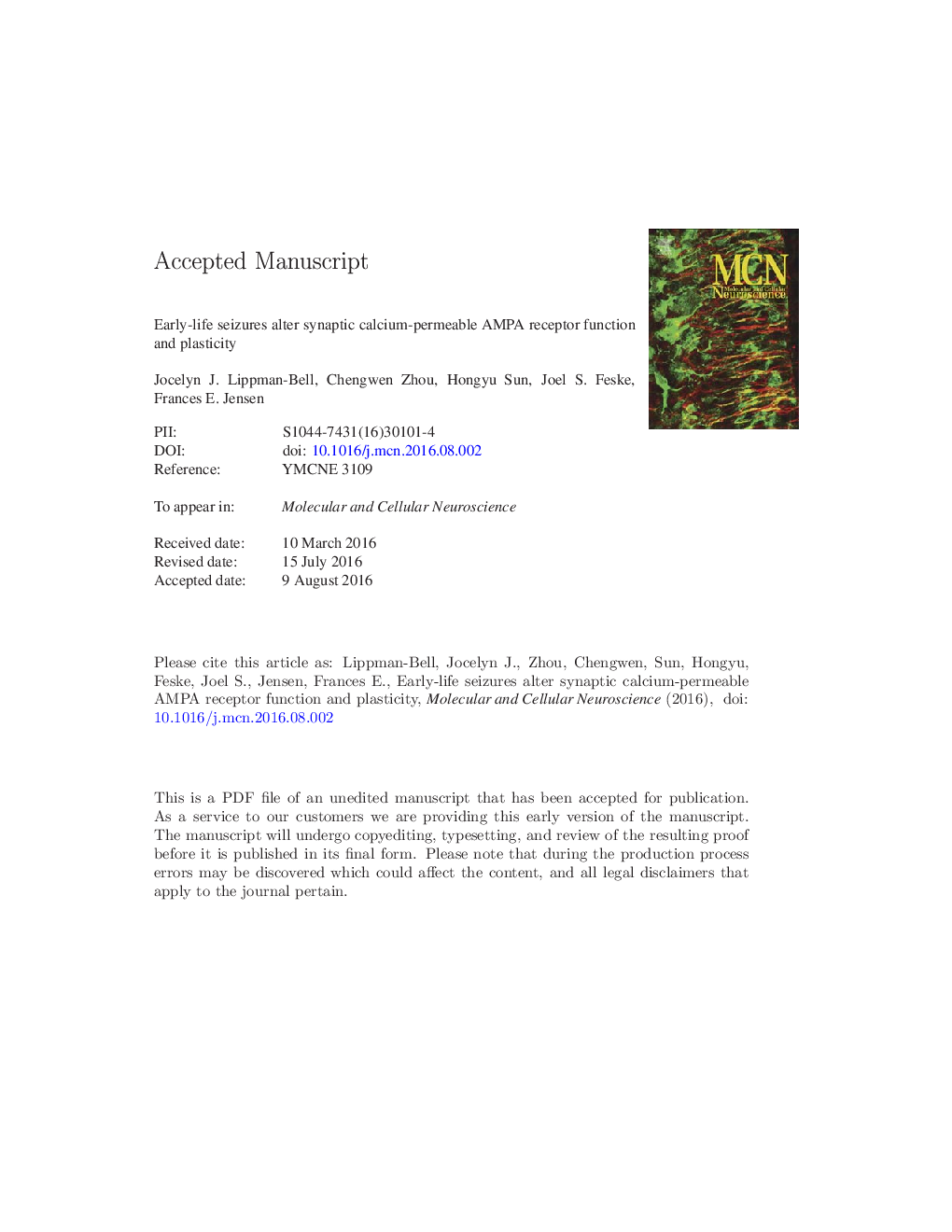| Article ID | Journal | Published Year | Pages | File Type |
|---|---|---|---|---|
| 8478445 | Molecular and Cellular Neuroscience | 2016 | 30 Pages |
Abstract
Calcium (Ca2+)-mediated4 signaling pathways are critical to synaptic plasticity. In adults, the NMDA glutamate receptor (NMDAR) represents a major route for activity-dependent synaptic Ca2+ entry. However, during neonatal development, when synaptic plasticity is particularly high, many AMPA glutamate receptors (AMPARs) are also permeable to Ca2+ (CP-AMPAR) due to low GluA2 subunit expression, providing an additional route for activity- and glutamate-dependent Ca2+ influx and subsequent signaling. Therefore, altered hippocampal Ca2+ signaling may represent an age-specific pathogenic mechanism. We thus aimed to assess Ca2+ responses 48Â h after hypoxia-induced neonatal seizures (HS) in postnatal day (P)10 rats, a post-seizure time point at which we previously reported LTP attenuation. We found that Ca2+ responses were higher in brain slices from post-HS rats than in controls and that this increase was CP-AMPAR-dependent. To determine whether synaptic CP-AMPAR expression was also altered post-HS, we assessed the expression of GluA2 at hippocampal synapses and the expression of long-term depression (LTD), which has been linked to the presence of synaptic GluA2. Here we report a decrease 48Â h after HS in synaptic GluA2 expression at synapses and LTD in hippocampal CA1. Given the potentially critical role of AMPAR trafficking in disease progression, we aimed to establish whether post-seizure in vivo AMPAR antagonist treatment prevented the enhanced Ca2+ responses, changes in GluA2 synaptic expression, and diminished LTD. We found that NBQX treatment prevents all three of these post-seizure consequences, further supporting a critical role for AMPARs as an age-specific therapeutic target.
Related Topics
Life Sciences
Biochemistry, Genetics and Molecular Biology
Cell Biology
Authors
Jocelyn J. Lippman-Bell, Chengwen Zhou, Hongyu Sun, Joel S. Feske, Frances E. Jensen,
